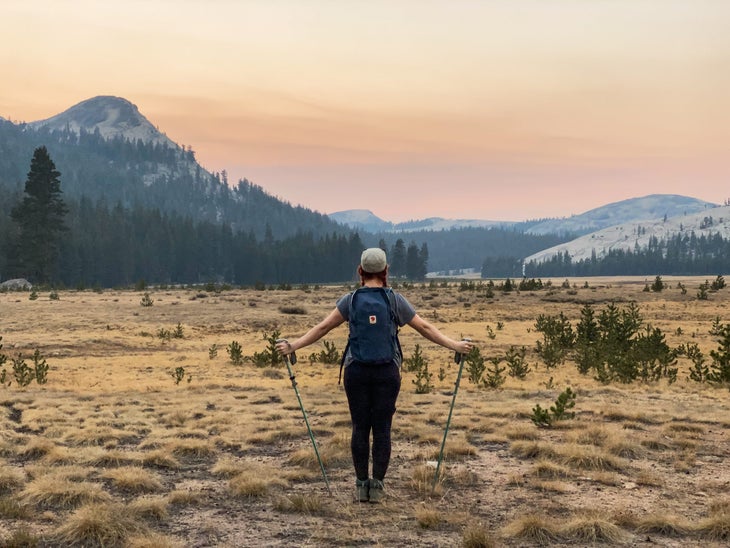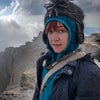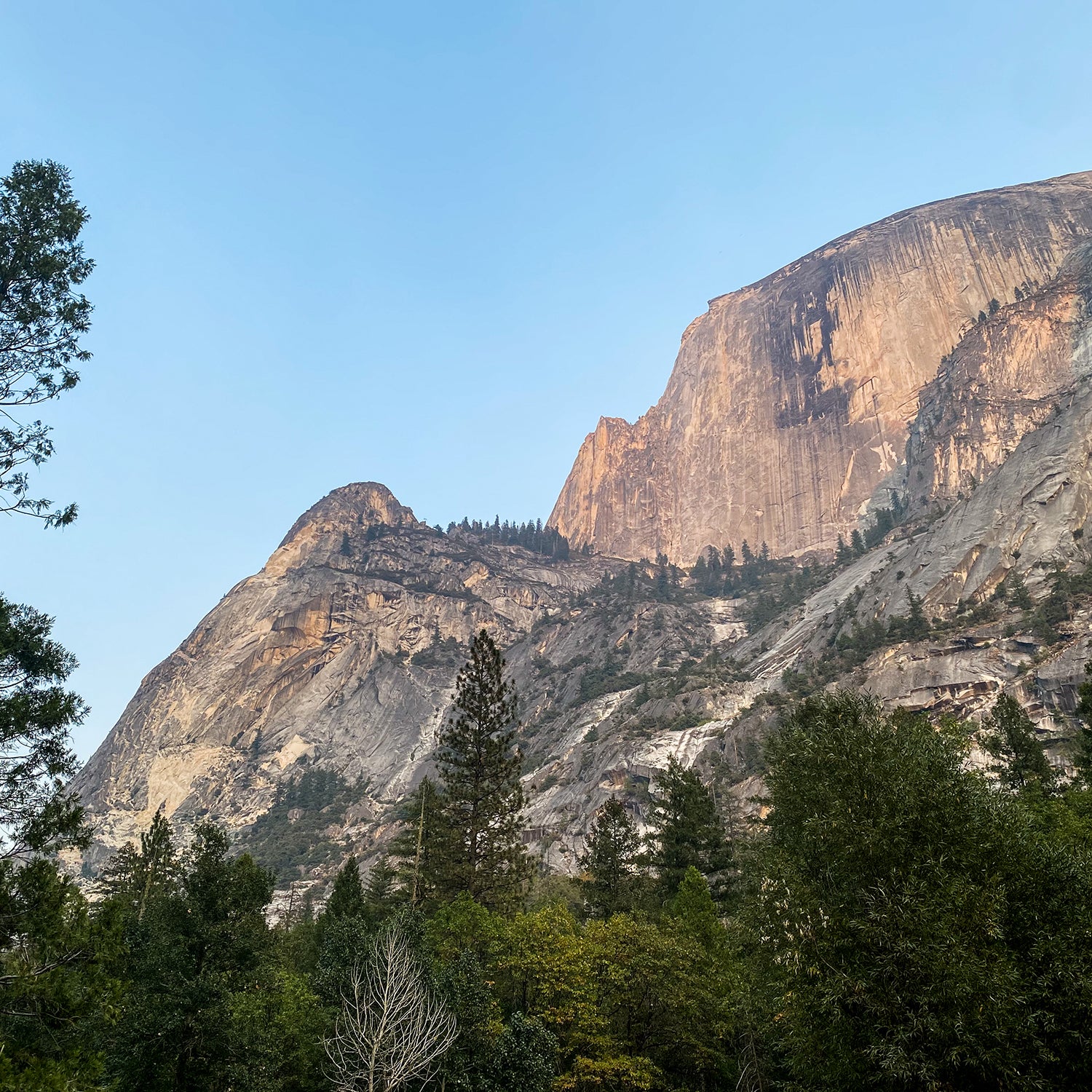63 Parks Traveler started with a simple goal: to visit every U.S. national park. Avid backpacker and public-lands nerd saved up, built out a tiny van to travel and live in, and hit the road, practicing COVID-19 best safety protocols along the way. The parks as we know them are rapidly changing, and she wanted to see them before it’s too late. Yosemite is her 44th park visit.
“If there had been a National Park Service when the O’Shaughnessy Dam was authorized to be built, there would have been a director who probably would have said, ‘Are you absolutely insane?! This is a national park.’”
I met up with Shelton Johnson the day before my trip to Yosemite in September 2020, and his words echoed in my head as I meandered around the immense, man-made Hetch Hetchy reservoir on a scorching morning. Considering that he was a decades-long ranger and something of a Yosemite legend after appearing in the Ken Burns national parks documentary, I talked to Johnson outside his Mariposa, California, home before even setting foot in the park.
“Yosemite is the cradle for the national park idea,” Johnson, 63, said. “Indirectly, John Muir’s failure [to protect Hetch Hetchy] became a success story for the Park Service, because it showed why we needed to have an agency.”
And what a failure it was. I had been to the park nearly a dozen times before, but had never been able to bring myself to the shores of Hetch Hetchy. The idea of it seemed too painful. Once a stunning basin touted as being more beautiful than its more famous cousin to the south, Yosemite Valley, the development of Hetch Hetchy ��to provide drinking water to the City of San Francisco. It was a blemish on the entire notion of a national park—the idea that these places were to be protected for the people’s enjoyment, forever.
Sure, the sapphire water looked inviting, but beneath its surface lay a more complicated past; the U.S. Army and Park Supervisors alone were not sufficient to defend against threats from Washington on a legislative level. The parks needed an agency to champion them from within the government, an agency that did not exist until 1916, decades after the first national parks had been created.
“If it happens in Yosemite, then why not in Yellowstone or the Grand Canyon?” said Johnson. “But if there’s a director, if there’s an agency, then the director of that agency can stand there and say, ‘Are you insane?’ It’s all a question of who gets to say, ‘Are you insane?’”
Were they insane? I found myself wondering the very same question as I wiped droplets of sweat from my brow on the five-mile hike out to Wapama Falls, a 1,000-foot-tall cascade that would have been bursting at the seams in spring, but was now a dry jumble of rock. Visitors aren’t even allowed to swim or boat in the reservoir. Why create a park only to pick off its resources one by one as though it were a common junk sale?

The thought lingered with me all afternoon, as I drove to Tuolumne Meadows, the park’s higher elevation alpine hub, and crunched my boots onto the seven-mile trail to Lower Cathedral Lake, a natural tarn fed by streams and snowmelt set at the base of a toothy granite mountain. With a through Gates of the Arctic, one of our country’s last truly wild places, it burdened my heart to know that the battle is not yet won. The conversation around how and why we protect or develop our national parks is, sadly, ongoing.
There was still a lot to love about Yosemite, though. Long touted as a mecca for big-wall climbers, the park is consistently in the top ten most visited parks and revered for its breathtaking valleys, secluded alpine meadows, and miles of glacially-carved granite. As a long-time Californian, it was the place I went when I needed an escape, begging nature to rock me out of my frazzled mind.
When I stared up at the spired summit of 10,912-foot Cathedral Peak in the amber glow of sunset, I felt a strange mix of immense gratitude and stalwart duty. Grateful to be alive in a time when I could enjoy so many of America’s natural wonders and fiercely obligated to help fight for them for the rest of my short life.
63 Parks Traveler Yosemite Info
Size: 759,620 acres
Location: Central California
Created in: 1864 (Yosemite Grant), 1890 (national park)
Best For: Hiking, rock climbing, backpacking, waterfall viewing, car camping, big vistas
When to Go: Yosemite’s two most touristed areas are at vastly different elevations. Access to Tuolumne Meadows via Tioga Road is, while Yosemite Valley is accessible year-round. Spring (31 to 73 degrees) is the best time for waterfalls, summer (47 to 90 degrees) brings crowds and great hiking weather, fall (30 to 84 degrees) is when rock climbers come out in full force, and winter (25 to 53 degrees) is often snowy and mob-free, even in the valley. (Temperatures provided are for Yosemite Valley.)
Where to Stay: If you’re looking to splurge on a nearby hotel, is the best of the bunch and conveniently located to Yosemite Valley and Tioga Road. Similarly, if you can nab a coveted spot, the are nestled right under Half Dome and have some seriously striking views.
Mini ���ϳԹ���: Hike to. This moderate, seven-mile trek begins at Tuolumne Meadow and is an epic way to see some of the park’s most unique features up close—idyllic alpine lakes and craggy granite peaks.
Mega ���ϳԹ���: Go on an. As one of the largest national parks in the lower 48, Yosemite is ripe with opportunities to really get out into the wilderness. Popular itineraries include: Grand Canyon of the Tuolumne, Ten Lakes, and the loop.
��


